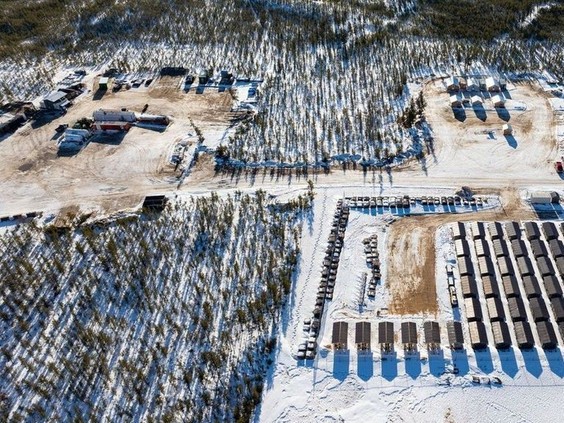
The merged company will have a market cap of $3.5 billion and resource base second only to Cameco
Michael Joel-Hansen
Saskatoon StarPhoenix
A uranium company with major holdings in Saskatchewan is about to undergo some major changes.
On June 24, it was announced that Australia-based Paladin Energy Ltd. had agreed to acquire Fission Uranium Corp. in a deal valued at $1.14 billion.
Fission, which is headquartered in Kelowna, B.C., has a number of projects in development in the Athabasca Basin in Saskatchewan’s north, including its PLS Project, which is scheduled to begin producing in 2029.
Paladin Energy is a uranium producer with a large mining operation in Namibia. Chief executive Ian Purdy said his company is looking forward to working with Fission to continue developing the PLS Project, which he said is one his company feels very good about.
“(It’s) certainly one of the best projects in the world, in our view,” he said.
PLS Project a priority
Purdy said Paladin will be able to help Fission with the project in a number of ways, such as funding and helping to line up customers. He said Fission has a good team that has been working out of Saskatoon to get the PLS Project up and going.
Along with planning to help the PLS Project, Purdy said Paladin has been working to develop its own project in Newfoundland and Labrador. The Michelin Project is north of Happy Valley-Goose Bay, and he said he believes Fission could be helpful in getting this future project going. However, Purdy said the primary focus is working in Saskatchewan.
“The next priority for us is all in on the PLS Project in Saskatchewan,” he said.
Purdy said both companies are currently in talks with their shareholders and other relevant parties to get the deal approved and hope to complete the transaction in September. The new entity is set to have a market capitalization of US$3.5 billion and will have its shares listed on the Toronto Stock Exchange.
“Post-deal, the Fission shareholders will own approximately 24 per cent of the combined company and the existing Paladin shareholders will own approximately 76 per cent,” he said.
Second only to Cameco
Overall, Purdy said the deal makes sense because it will create a company with holdings in Canada, Australia and Namibia, which he said are the three premier Western uranium mining jurisdictions. The new company will have the second-largest resource base of any listed uranium miner in the West, with a total resource base of more than 540 million pounds of uranium.
“We’ll be only second to Cameco,” he said.
In the coming weeks, Purdy said he is planning to travel to Saskatchewan with Fission chief executive Ross McElroy to meet with First Nations leaders. He said he also recently spoke to Premier Scott Moe’s office and is hoping to be able to meet him or officials from his office during the trip.
Looking at the uranium market, Purdy said prices have recovered over the past two years and the market is expected to further tighten as demand is forecast to increase over the next 10 years and beyond. He said Paladin is already expecting to garner strong sales out of its existing operations, adding that these future prospects make the company all the more bullish in regards to the potential of the PSL Project.
“We see the opportunity to deliver the PSL Project into a very tight market and we think those pounds that’ll be produced out of that project in Athabasca will be in great demand,” he said.

